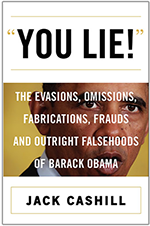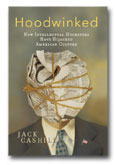Baseball: The Game of Fathers and Sons
By Jack Cashill
WND.com | October 29, 2014
 If there is one movie scene that can make a grown man cry, especially those of us who lost our fathers at an early age, it is the one at the very end of “Field of Dreams.”
If there is one movie scene that can make a grown man cry, especially those of us who lost our fathers at an early age, it is the one at the very end of “Field of Dreams.”
Ray, the character played by Kevin Kostner, meets the young catcher John Kinsella, his long dead father brought back to youthful glory by the power of dreams and Hollywood special effects.
Uncertain as to what to do, Ray says to his father, “You wanna have a catch?” A tear in his eye, John answers, “I’d like that.”
“They throw the ball back and forth,” read the director’s notes at movie’s end. “And as we pull up higher and higher we see a father and son bathed by white floodlights and car headlights on the silent satiny green of a baseball diamond at the edge of a cornfield.”
Pass those hankies!
This scene works so well because baseball, unlike any other American sport, is a game of fathers and sons. This has always been true, but it is even more true today.
Unless a father inspires his son to play baseball he is unlikely to pick it up on his own. Except in Latin America and maybe a few odd pockets here in the U.S., sandlot baseball no longer exists.
I find myself ruminating on this subject because I have watched more baseball in the last month than I have in the last 30 years.
The reason is simple enough. My homies – the Kansas City Royals – made it to Game 7 of the World Series.
The Royals’ emergence has seemed here in KC very nearly miraculous. The team had not been in a playoff game since 1985. From 1995 through 2012, the Royals had but one winning season.
From 2004 through 2012, the Royals lost at least 90 games eight times. Then late in the 2014 season – they had a losing record through the first 100 games – it all came together.
I, like just about everyone else in town, will have watched at least 15 games, most in their entirety, just in the month of October. Doing so, I have noticed things that I had all but forgotten.
Baseball is a wonderfully communal game. In Kansas City at least, women follow the game as intensely as men. I watched the final game of the American League Championship series in a bar and everyone in the bar oohed and aahed in exactly the same way.
In that baseball is not really a contact sport, fans tend to hate the opposition less than they do in football or basketball. There is also no equivalent of the end zone dance and much less physical taunting. As a result, opposition fans are better tolerated.
At the ballpark, the fans tend to behave better as well. There is less violence than at other sporting events and much less profanity. This likely has something to do with the number of fathers who bring their children.
New Yorkers, of course, are something of an exception to the rule. “Nowhere else in the country,” said now retired pitcher John Rocker, “do people spit at you, throw bottles at you, throw quarters at you, throw batteries at you, and say, ‘Hey, I did your mother last night – she’s a whore.’”
Although basketball and football are generally more interesting to watch, for those who really care who wins, baseball retains its emotional energy until the very last out, regardless of the score.
In timed sports, the outcome is often sealed minutes before the final horn, and endings are anti-climactic. In baseball, with the opposition’s final out – or the home team’s walk-off hit – there is huge collective moment of pure joy unrivaled in any other sport.
With the possible exception of soccer, baseball has also become the most spontaneously diverse of all major sports. Baseball has the advantage, though, in that its diverse players actually get to score.
The Royals’ game-six starting lineup featured four white Americans, one African-American, three guys from Venezuela, one guy from Japan, and a starting pitcher from the Dominican Republic.
Despite the sport’s diversity, the media have worked hard to inject their inevitable racial angle into their reporting. The one controversy they have fixed on is the decline in participation by African-Americans in Major League Baseball.
A generation ago, roughly 20 percent of big-league players were black Americans. Today, that number is roughly 8 percent.
The San Francisco Giants – the team that gave us Willie Mays, Willie McCovey and Barry Bonds – did not have a single African-American player on its World Series roster.
Sports reporters, who think quite like their newsroom colleagues, fan the issue’s flames, failing to understand why the issue exists.
True to form, they will cite any number of reasons beyond the obvious. Racism being an unlikely explanation, they lean now toward classism.
“The evolution of travel teams and pay-to-play leagues have instinctively turned youth baseball into a corporation that weeds out the under-privileged and promotes the privileged,” opined Steven Wetherill recently in USA Today.
“It’s quite simple,” Wetherill concluded, “if you don’t have the money, you don’t get the exposure.”
In reality it is simpler than that, Steve. If you don’t have anyone to ask, “You wanna have a catch?” you will never learn to love the game.

Jack Cashill's newest book is out:
Get your copy of Jack Cashill's "You Lie!"

___
Also:
Jack Cashill's:
Hoodwinked: How Intellectual Hucksters have Hijacked American Culture

Click here for signed first edition
